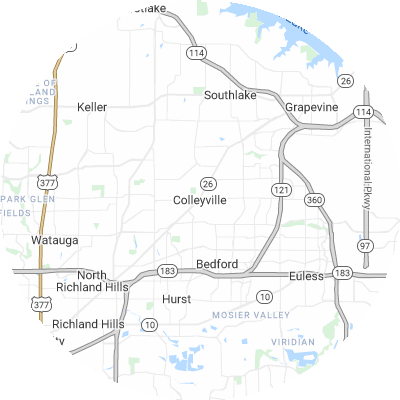Signs You May Need Gutter Guards
Gutter guards aren’t always needed, but indicators of blocked and overflowing gutters are clear. Signals of chronic gutter issues include:
- Soggy ground or visible erosion around your foundation
- Mold growth, interior wall stains, or peeling exterior paint on walls near gutters.
- Leaky joints or seams where water leaks from the gutters
- Visibly saggy, damaged, or misaligned gutters that no longer direct rainwater correctly
- Frequent clogs that lead to overflow and water spilling over gutters
How To Choose a Gutter Guard Installer
Assess Their Experience
When picking an installation company, look for one with considerable experience and knowledge about various brands and guard types. A company with experience will understand how to measure and install gutter guards for your specific needs. Inquire about a company's years of experience and request referrals from local customers.
Verify Proper Licensing and Insurance
When getting in touch with potential installation providers, always verify that they are licensed, bonded, and insured with both workers compensation and general liability coverage. This protects you if any injuries or accidents happen. Ask for current licensing and insurance papers from potential providers.
Choose Reputable Brands
Look for installers that provide tenured trusted gutter guard brands such as Gutter Helmet and LeafFilter. Steer clear of companies that only install generic no-name guards or their own off-brand products. These lesser-known products may lack rigorous testing.
Seek Custom Fit Services
For optimal performance, guards should be sized and trimmed on-site to fit your gutters. Choose a company that specifically measures and trims guards for your home rather than using one-size-fits-all guards. Accurately fitted guards minimize gaps where debris can get trapped.
Examine Warranties
High-quality gutter guard installers normally offer 20-year or lifetime warranties against leaks, clogs, rust, and other issues. Before choosing a company, carefully review the warranty terms for materials and workmanship guarantees. Warranties are an excellent way to protect your gutter investment.
Check Reviews and Referrals
It's a good idea to look at online reviews on sites such as the Better Business Bureau (BBB), Yelp, or Google Reviews to see what customers say about their experience. You can also ask neighbors to suggest quality gutter guard businesses in your area. When researching potential providers, we recommend selecting companies with positive reviews consistently over time rather than just one or two reviews.
Types of Gutter Guards
The six primary types of gutter guards are as follows:
- Foam guards are large pieces of foam that are placed in your gutters to block debris. They're light and easy to install. On average, you can expect to pay $2.48 per linear foot for foam guards.
- Brush guards are made of large brush bristles that partially obstruct your gutters, catching debris and allowing water to pass through. Brush guards cost around $4.07 per linear foot.
- Screen guards have large holes that allow water to pass through while blocking debris. Screen guards cost roughly $4.76 per linear foot.
- Mesh guards stop debris but let water through. Mesh guards have even smaller holes than screen guards. They're durable and encourage debris to slide off as opposed to sitting on top of your gutters. On average, you can expect to spend $4.43 per linear foot for mesh guards.
- Micro-mesh guards have even smaller holes than mesh guards, allowing even less debris through than mesh. These types of guards are extremely effective. On average, you can expect to spend $5.48 per linear foot for micro-mesh guards.
- Surface tension guards, also called reverse curve guards, use surface tension to allow water to flow into gutter system while debris slides off. Generally, they will be visible from the ground. On average, you can expect to spend $3.49 per linear foot for surface tension guards.












